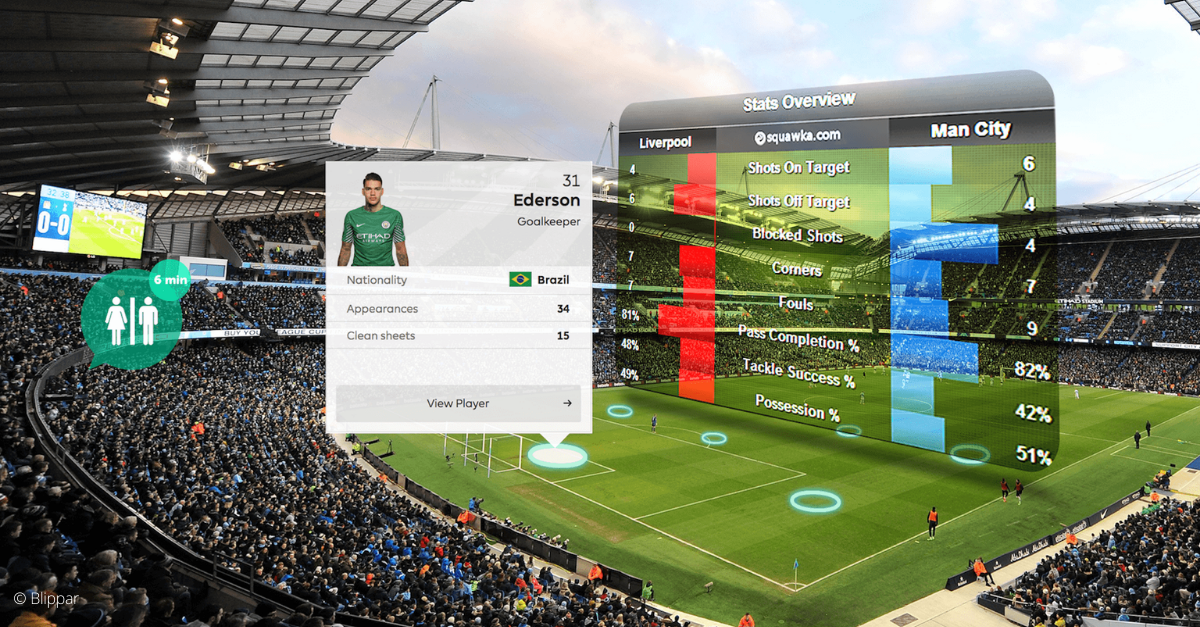New ways of experiencing sport with AR and VR
In just a few years, the sports experience has been totally renewed by the appearance of new technological possibilities and uses. This profound renewal is not about to stop: augmented reality (AR) and virtual reality (VR) are set to be the next revolutions in the field of sport and will change the lives of sportsmen and women, staff and fans.
AR and VR: technologies with multiple possibilities
VR is an immersion in a virtual universe created entirely by humans and accessible through a virtual reality headset. AR does not require a headset. Virtual objects are implemented in the real world and are visible by scanning the area where they are located with a smartphone.
AR and VR have been around for several years now, but it is only now that they are becoming absolutely essential. According to Snapchat, AR has moved beyond the phase of playful experimentation into the next phase where practical applications are beginning to be explored. This is also why, according to the social network, 75% of the world’s population and almost all smartphone owners will be frequent AR users by 2025. For the moment, VR is set for a similarly meteoric rise thanks to a significant drop in the price of headsets and Apple’s bet on this technology with a headset due to arrive in 2022.
One of the reasons why these technologies are so successful is that they can be deployed in all sectors for a variety of purposes, from entertainment to learning. So why is the sports sector so interesting when it comes to AR and VR? Because it is in this sector that AR and VR best deploy their potential.
An even more immersive fan experience
Fans’ relationship with sport is more direct and personal than ever before. They want to reinforce and extend the emotion of the match with content and experiences that allow them to be fully immersed in the life of their team. Taking this into account and the fact that AR is becoming embedded in everyone’s usage, it is understandable that fans expect the teams they support to offer them unique experiences from this technology. From social media filters to AR football shirts or access to a star player’s avatar in AR, the playground is vast and there is plenty of ways to keep fans happy wherever they are.
This is the whole point of AR and VR: they allow us to offer entertaining or instructive experiences to fans across borders. Although VR is currently less accessible to the masses than AR, this does not prevent sports players from taking a lead by offering fans immersive experiences, such as the possibility of watching a football match while practically being on the field. This is an experience that everyone will be able to enjoy when VR headsets become more widespread.
The place of AR and VR experiences is not just outside the stadium. Venue experience is a key component of the fan experience, and these technologies can make it even more memorable. With them, people no longer come to the stadium just to see a game, but to enjoy a total experience. This is the case today more than ever with the arrival of 5G, which opens up new possibilities, as shown by the incredible dragon flying over the Incheon baseball stadium in South Korea. AR and VR are not just about the game. With the deployment of 5G, these experiences become possible live, during the game. In this context, they allow fans to not only not miss any information, but even to customize the way they watch the game by switching from a more playful mode to a strategic one if they wish. This is already possible with CourtVision for NBA basketball games.
AR and VR show how the sports experience and the fan experience are evolving as technologies progress. They allow us to offer more and more to fan communities by exploring with them new horizons and new ways of living their passion for sport.
AR and VR as partners for athletes
From AR and VR for sports fans to AR and VR for athletes, there is only one step. These technologies can enable everyone to practice a sport differently, and even make sport more accessible. You can cycle the Col de la Gineste from home, from your nursing home or even from the ISS thanks to VR.
Beyond the immersive and playful aspects, we often forget to underline the other qualities of AR and VR. Yet these are what make AR and VR the allies of athletes and the teams working with them. The pedagogical advantages of these technologies have long been part of these hidden aspects, but today they are increasingly attracting attention. With active learners, in situation, training in VR is much more efficient than a course or a presentation: we can go from an 8-hour training session to 15 minutes in VR without having to cut back on learning. They are a real asset in-house for training stewards and the staff around the athletes.
AR and VR also enable crucial tasks to be performed with greater accuracy and understanding. This is a second asset that is still too often overlooked, yet it makes AR and VR particularly beneficial for sports medicine and player training. Holomed enables a detailed analysis of the joint movements of athletes to better prevent and heal injuries. Better understanding and supporting athletes in their performance also involve training. In this matter, AR and VR are complementary. While AR makes it possible to give more context to game indications or refereeing, VR makes it possible to combine immersion and rigorous measurements and thus develop neurotraining.
In sport, AR and VR, therefore, deserve to be explored beyond their entertainment value, as the adoption of these technologies will also make a difference to the performance of athletes and organizations.
From amateur athletes to the world’s biggest clubs, AR and VR have a lot to offer at any point in the sporting experience
The diversity of uses that can be made of them supports the conclusions of the studies carried out on the sector: after a time of exploration of the playful aspects, people are increasingly turning to these technologies for practical uses. These technologies have the potential to totally transform the sports sector, and it is those who are already taking the path of change who will be the pioneers of innovation.


